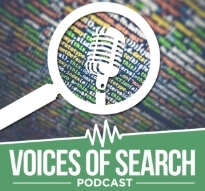The blurring lines between search intent & optimization
- Part 1SEO best practices & AI for ecommerce
- Part 2 The blurring lines between search intent & optimization
Show Notes
-
·01:16 - Understanding search intent and optimization in SEO Search intent refers to the underlying purpose behind a users search query. On the other hand, optimization involves understanding that intent and tailoring your content to align with the users search intent and the goal of your website. ·02:36 - The complexity of search intent Search teams can have multiple intents. Search results can encompass both commercial pages and informational content, reflecting Googles uncertainty regarding whether a users primary objective is to make a purchase or gather information. ·03:49 - Search intent and the SEO conundrum While John Mueller has said that content ranking is primarily influenced by its helpfulness, this raises questions about who ultimately decides what qualifies as helpful content. Despite the uncertainty, prioritizing helpful content that follows Googles guidelines remains crucial for SEO. ·06:07 - Determining and optimizing for user intent Determining user intent behind search queries involves a combination of educated guesses and testing to refine content priorities. While an eCommerce site needs a PLP first, informational blog content could also drive additional traffic that the website wasnt targeting initially. ·08:45 - Search intent and optimization Optimization begins with identifying the search intent of your target audience, followed by assessing existing content to determine whether it meets that intent. Then, it boils down to the three Cs of search intent, content type, content format, and content angle. ·10:55 - Identifying and leveraging differentiators in eCommerce While price remains a major consideration for consumers, it isnt the only factor influencing purchasing decisions. Identifying and effectively communicating what sets your business apart is crucial. If you offer features that competitors lack, highlight these aspects. ·12:46 - Integrating consumer intent into business strategy This requires collaboration across teams and clear communication of SEO efforts to higher-ups to gain buy-in. While SEO has limited control, title tags and meta descriptions are prime spots to impact search intent, for example, highlighting a "buy online, pick up in store" option. ·14:37 - Influencing macro strategy through competitor analysis Analyze top-ranking search results, comparing competitors strategies with internal practices to identify gaps, opportunities, and areas for differentiation. Present these findings in meetings, adapting successful competitor strategies for your business in an original way. ·16:24 - Evolving user expectations of eCommerce websites Nearly half of retail website users go directly to the search bar for immediate access to desired products. If user needs arent met immediately, theyre likely to leave and seek alternatives, highlighting the importance of internal search functionality in eCommerce.
Episode Summary
-
·"My best practice is to always test things. Test and learn when it comes to trying to figure out how to optimize for user intent." - Cameron Gordon ·"Price will always be top of mind, but it can't always be the main driver. Do you have something that another business doesnt have? Being able to play up your differentiators is how you can make things easier on yourself." - Cameron Gordon ·"Collaboration with different team members and departments is huge. You must be able to communicate and sell your SEO ideas to higher-ups and get them to buy-in." - Cameron Gordon ·"Almost half of retail users head to the search bar when they go to a website. Users come with higher expectations, and if they cant find what they want immediately, theyll go somewhere else." - Cameron Gordon
- Part 1SEO best practices & AI for ecommerce
- Part 2 The blurring lines between search intent & optimization
Up Next:
-
Part 1SEO best practices & AI for ecommerce
Cameron Gordon, SEO Manager at Rack Room Shoes, delves into optimizing eCommerce SEO using AI and search intent. AI is changing the way we do eCommerce SEO, making product descriptions easier and enhancing internal search functionality to drive user experience. However, we must exercise caution to ensure we maintain originality in our content when leveraging AI to maximize efficiency. Today, Cameron discusses SEO best practices and AI for eCommerce.
Play Podcast -
Part 2The blurring lines between search intent & optimization
Cameron Gordon, SEO Manager at Rack Room Shoes, delves into optimizing eCommerce SEO using AI and search intent. A single can encompass multiple intents, introducing a layer of complexity to understanding search intent and optimizing content accordingly. As SEOs, we must adopt a test-and-learn mindset, continually analyzing user behavior and competitor research to ensure we’re meeting user needs. Today, Cameron discusses the blurring lines between search intent and optimization.









